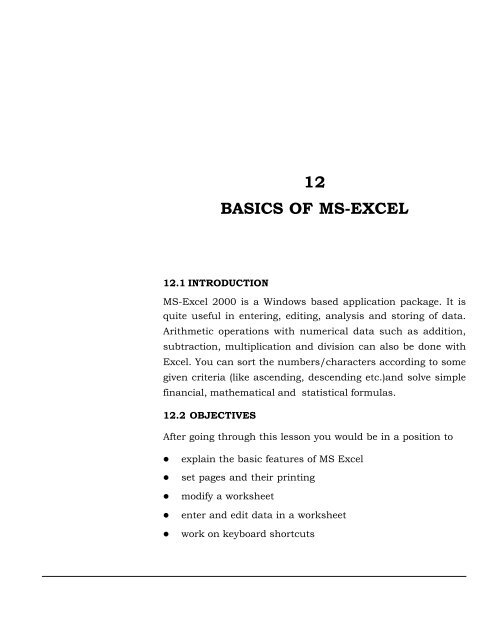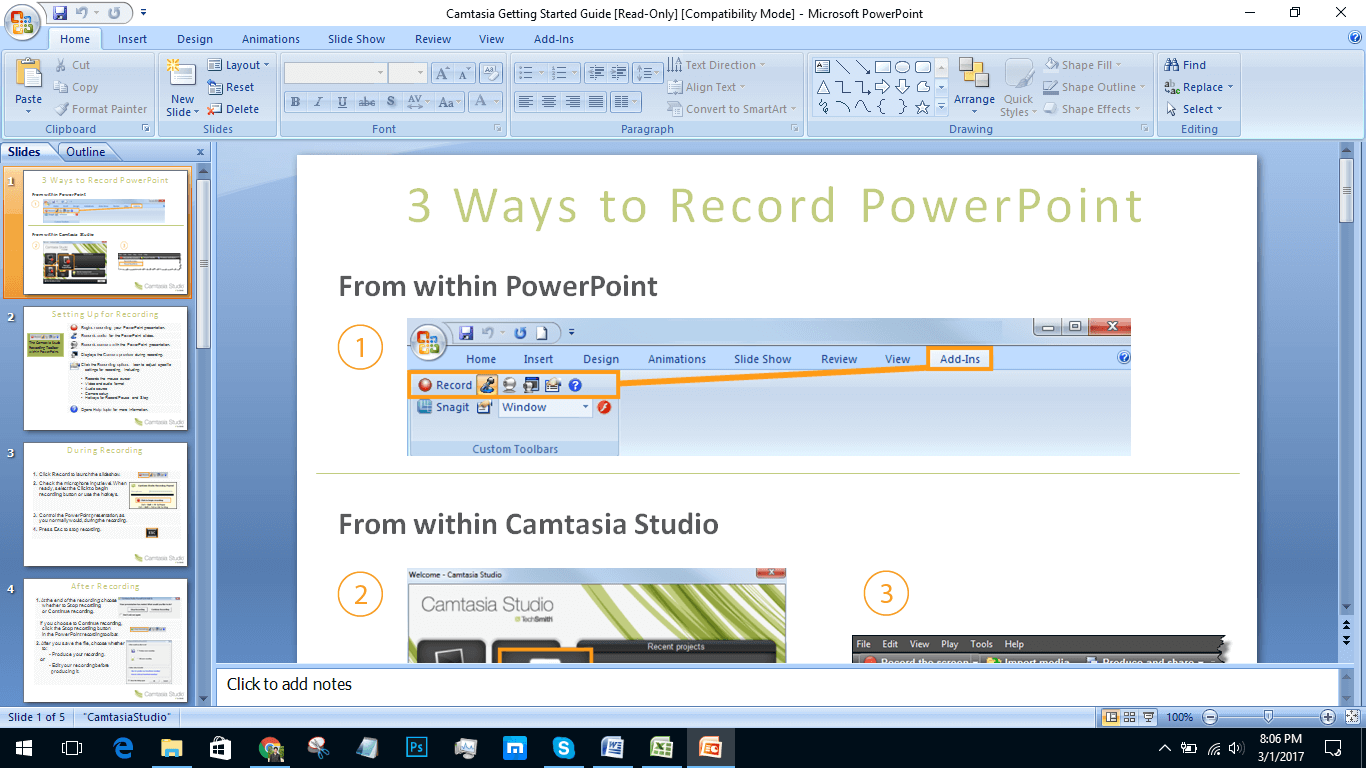How Excel Works
An Excel document is called a Workbook. A workbook always has at least one Worksheet. Workseets are the grid where you can store and calculate data. You can have many worksheets stored inside a workbook, each with a unique worksheet name.Worksheets are laid out in columns (vertical) and rows (horizontal). The intersection of any given row and column is a cell. Cells are really where you enter any information. A cell will accept a large amount of text, or you can enter a date, number, or formula. Each cell can be formatted individually with distinct border, background color, and font color/size/type.
- How To Use Excel: A Beginner’s Guide To Getting Started. Written by co-founder Kasper Langmann, Microsoft Office Specialist. Excel is a powerful application—but it can also be very intimidating. That’s why we’ve put together this beginner’s guide to getting started with Excel.
- Excel is an electronic spreadsheet program that is used for storing, organizing, and manipulating data. The information we've prepared refers to Microsoft Excel in general and is not limited to any specific version of the program. What Excel Is Used For.
- This question allows you to explain your resourcefulness with Excel and confirms your understanding of this popular practice. Example: “A pivot table is an essential tool to summarize, aggregate, reorganize, sort, group, count, average or compute data stored across a database.
Microsoft Excel provides a grid interface to organize nearly any type of information. The power of Excel lies in it's flexibility to define the layout and structure of the information you want to manage.
Excel Formulas
You can create simple and complex formulas in Excel to calculate just about anything. Inputs to a formula may be other cells, the results of other formulas, or just straight-forward math (5*2+3). Excel includes a formula library for calculating things like Net Present Value (NPV), standard deviation, interest payments over time, and other common financial and mathematic formulae. Excel's formula bar includes a feature to help you search for a formula you need, and also helps you select the appropriate cells in your workbook to calculate the formula.Excel Charting
Excel offers a wide array of charts to visualize data. They range from simple line graphs to bubble and radar charts. Excel has two main tools for charting: standard charts and pivot charts.Taking the time to explain your knowledge and skills in Microsoft Excel is worth the effort and time on your resume. Excel skill additions can help you stand out and put you ahead of other candidates in the process of selection for interviews. This article will discuss Excel skills and the best ways to include them on your resume.
What are Excel skills?
Excel skills are those you’ll need for the spreadsheet program in Microsoft Office that many businesses use for recording data, finances, calculations and other valuable information. There are common uses and knowledge of Excel and there are more advanced skills that are an asset to highlight in your resume. Knowing how to use the Microsoft Excel program properly and efficiently will help your resume stand out among others.
When describing your Excel skills on a resume, you should be specific about the skills and tasks you’ve worked with and your knowledge of the program. Being able to explain certain properties and functions you mastered in Excel will showcase your advanced ability with the spreadsheet software.
Common Excel skills to list on your resume
Here are some common functions and data recording uses within Excel that you can highlight on your resume:
Formula functions
Since Excel is a spreadsheet program used to record data, it is an imperative skill to know how to use formulas to measure and calculate all sorts of information. Formulas are used to find the values of cells and are the main function tool of Excel. Knowledge like simple math equations and understanding Excel’s calculation functions are needed to work within the program. In your resume, you will want to explain the functions and calculations you worked with the most while using Excel.
Feature any Excel educational courses you’ve taken to expand your knowledge of formulas and equations. Because there are over 300 formulas and functions in Excel, it is beneficial for you to share examples and feature your knowledge of the program on your resume. This will give employers a clear picture of your knowledge of the program.
Explain Ms Excel And Any Four Features
Formatting
There are many chart designs and color schemes you can use in Excel. Formatting your spreadsheets does not have to be boring or lack creativity. Maybe you had the freedom to create spreadsheets in Excel with spectacular labels and designs for the company you worked for that were later used in the business’s presentations and promotions. This is a skill you can include in your resume. Tell about a time you made marketing spreadsheets that drove sales to increase or that landed a new business deal with the company.
Download generic others driver. Being able to format information and data that is visually pleasing is a meaningful skill to have when working with Excel. This could make your next employer desire you over other candidates because you not only can record data correctly and efficiently within Excel, but you also design it in a way that could be marketed for the visual success of the company.
Pivot tables
Pivot tables are highly valued in Excel because they show an interactive view of certain data in a spreadsheet or among many other spreadsheets. With pivot tables, you can group data, form categories, filter data to exclude or include information, break down data into months or years and even build other progress charts. Since pivot tables are a viewing mechanism to show the differences or correlations of a set of information in spreadsheets, this Excel skill is helpful to feature on your resume. Explain how you used pivot tables for the examination of large data over time for your last employer. Highlighting how you’ve used pivot tables to record and show information is a key skill to include on your resume.
Explain Ms Excel
VBA knowledge
Visual Basic for Applications (VBA) is the programming language of Excel and all the other Microsoft Office programs. Since you cannot manipulate Excel program software through VBA, the skill with VBA is mastering how to make macros to optimize the time used in Excel. Knowing how to code macros with VBA will create triggers of certain actions in the Excel model. The macro will be activated by the modification of certain cells or there could be an action button created through VBA macros on the worksheet. Stating the use of VBA knowledge with macros to create buttons or triggers into the Excel software is an advanced skill that will make you an impressive candidate to an employer through your resume.
Explain The Importance Of Ms Excel

Interfacing Excel with other software
If you worked with other programs using interfacing techniques from Excel, like importing or exporting data, then you should give examples of how you used this within your resume. Employers are always looking for applicants who are diverse in their knowledge of incorporating other programs and tools while using Excel. Interfacing is also an advanced skill that will indicate your level of knowledge. Telling how you interfaced Excel with other programs for your last job or project will tell employers you are highly qualified for the job.

All About Ms Excel
While all of these skills are important and useful in Excel, some of the advanced skills, like VBA knowledge and interfacing, might not be required by the employer. Drivers enigma software usb devices. You could do some research into the company or business you are applying for to gain more insight into what Excel skills the employer is expecting from you.
